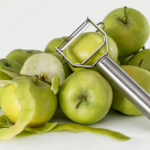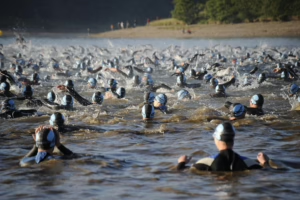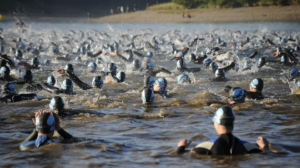Navigating Your Body’s Map: The Most Effective Pressure Points Explained
Introduction
In the intricate landscape of human anatomy, pressure points serve as powerful junctions where physical and energetic connections intersect. These points, deeply rooted in practices such as acupuncture and acupressure, can influence our well-being, alleviate discomfort, and enhance overall vitality. This article will delve deeply into the most effective pressure points throughout the body, examining their locations, functions, and techniques for utilizing them effectively.
Understanding Pressure Points
What Are Pressure Points?
Pressure points are specific locations on the body where nerves, blood vessels, and muscles converge. Stimulation of these points can trigger a range of responses, from pain relief to emotional balance. Historically, various cultures have recognized the significance of these points, using them for therapeutic and medicinal purposes.
Historical Context
The concept of pressure points is not a modern phenomenon. Ancient practices like Traditional Chinese Medicine (TCM) and Ayurvedic medicine have long incorporated the understanding of energy flow and its impact on health. TCM identifies pathways known as meridians, through which “qi” (life force) flows, connecting various pressure points across the body.
The Science Behind Pressure Points
Research has sought to elucidate the mechanisms underlying the efficacy of pressure point stimulation. Studies indicate that stimulating these points can lead to increased blood flow, muscle relaxation, and modulation of pain perception by triggering the release of endorphins and other neurotransmitters.
Major Pressure Point Systems
Before diving into specific pressure points, it’s crucial to understand the two predominant systems: acupressure and reflexology.
Acupressure
Acupressure is a technique derived from acupuncture, where pressure is applied to specific points to stimulate energy flow. Often practiced without needles, it uses fingers, palms, or elbows to apply pressure.
Reflexology
Reflexology is based on the premise that certain areas of the feet, hands, and ears correspond to organs and systems within the body. By massaging or applying pressure to these areas, reflexologists aim to promote healing in corresponding bodily systems.
The Most Effective Pressure Points
Now, let’s explore some of the most effective pressure points across various areas of the body and their applications.
1. LI4 (Hegu)
Location: Between the thumb and index finger.
Function: LI4 is known for its ability to relieve headaches, alleviate stress, and enhance general well-being.
Technique: Use your opposite thumb to apply firm pressure on this point for about 30 seconds. Release, then repeat.
2. PC6 (Neiguan)
Location: On the inner forearm, about two finger widths from the wrist crease.
Function: This point helps relieve nausea, anxiety, and can promote relaxation.
Technique: Press the point with your thumb or fingers, holding pressure for at least a minute while breathing deeply.
3. ST36 (Zusanli)
Location: Four finger widths down from the bottom of the kneecap, and one finger width to the outside of the shin bone.
Function: ST36 is revered for its ability to boost energy levels, improve digestion, and enhance overall immunity.
Technique: Apply firm pressure with your thumb for 1–2 minutes while taking deep, calming breaths.
4. SP6 (Sanyinjiao)
Location: On the inner leg, about four finger widths above the inner ankle bone.
Function: This point is particularly beneficial for menstrual cramps and reproductive health.
Technique: Using your fingers or thumb, apply pressure and hold for 1–3 minutes, focusing on relaxing your pelvic region.
5. GB20 (Fengchi)
Location: In the hollows just below the base of the skull, on either side of the spine.
Function: GB20 is effective for relieving headaches, neck tension, and improving mental clarity.
Technique: Use your fingers to press gently on these points while tilting your head forward for added effect.
6. BL23 (Shenshu)
Location: About two finger widths from the spine at the lower back, opposite the kidneys.
Function: This point supports kidney health, boosts vitality, and alleviates lower back pain.
Technique: Apply firm pressure with your thumbs for 1–2 minutes while breathing deeply.
7. Yintang (Hall of Impressiveness)
Location: Between the eyebrows at the center of the forehead.
Function: Yintang is known as the “third eye” point, promoting calmness and reducing anxiety.
Technique: Gently press and circle this point with your fingertips for several minutes to induce relaxation.
8. TH5 (Waiguan)
Location: On the outer side of the forearm, about two finger widths above the wrist.
Function: This point helps to relieve stress, improve circulation, and alleviate side pain.
Technique: Use your thumb or fingers to press firmly for 30 seconds to a minute.
9. CV12 (Zhongwan)
Location: On the abdomen, halfway between the belly button and the bottom of the sternum.
Function: CV12 is known for its ability to improve digestion and relieve stomach discomfort.
Technique: Apply gentle pressure with your fingertips while taking deep, calming breaths.
10. HT7 (Shenmen)
Location: On the wrist, at the crease, in line with the little finger.
Function: This point is often used for anxiety, insomnia, and emotional balance.
Technique: Press gently for 1–2 minutes, focusing on your breath and letting go of tension.
Best Practices for Stimulating Pressure Points
Finding the Right Environment
To effectively stimulate pressure points, find a quiet, comfortable space where you can relax. Dim lighting and soft music can enhance the experience.
Using the Right Techniques
- Pressure: Apply steady, even pressure—avoid sudden, jerky movements.
- Breath Connection: Incorporate deep breathing to deepen relaxation.
- Duration: Spend 1-2 minutes on each point, adjusting pressure as necessary.
When to Avoid Pressure Points
While pressure point stimulation is generally safe, some conditions may warrant caution, including:
- Pregnancy: Certain points can induce labor or affect fetal health.
- Medical Conditions: Consult a health professional if you have chronic conditions or infections.
- Recent Injuries: Avoid pressing on injured areas.
Integrating Pressure Points into Daily Life
Self-Care Practice
Incorporate pressure point stimulation into your daily routine. Simple practices like applying pressure to LI4 during times of stress or using PC6 during travel can promote better health and emotional resilience.
Mindful Movement
Engaging in yoga and tai chi can enhance your understanding of your body’s pressure points, blending movement with mindfulness for more effective self-care.
Combining Techniques
Combining pressure point relief with other practices, such as herbal remedies, diet, and meditation, can create a holistic approach to health and well-being.
Conclusion
Navigating your body’s map through pressure points is a liberating journey toward enhanced health and well-being. By understanding and utilizing these effective points, you can alleviate discomfort, reduce stress, and foster a deeper connection with your body. Incorporating pressure point techniques into your daily routine can empower you to take charge of your health, fostering resilience and vitality in your life.
References
- National Center for Complementary and Integrative Health (NCCIH). “Acupuncture.” NCCIH.
- Zhao, Z. Q. (2008). “Pain Regulation by Acupuncture.” Nature Reviews Neuroscience, 9(8), 693-703.
- Lee, J. H., & Kiyohara, Y. (2017). “The History and Development of Acupressure.” Journal of Evidence-Based Complementary & Alternative Medicine, 22(1), 11-19.
- Liu, J. W. et al. (2019). “The Effects of Acupressure on Pain Management: A Systematic Review.” Pain Research and Management, 2019.
- Patil, P. M., & Patil, S. B. (2021). “Reflexology: A Review.” Journal of Clinical and Diagnostic Research, 15(9), 154-158.
Apart from the references to direct sources, further reading can be found in holistic health and alternative therapy literature, where these concepts are explored in greater depth.


























Add Comment